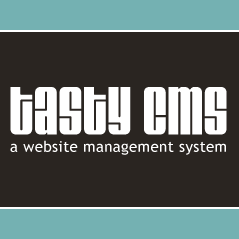A Quick Intro to Heading Tags
Posted on Monday, February 20, 2012 at 4:06 PM
The words that you choose when writing for your website are extremely important. There are a lot of factors that go into optimizing your content for both search engines and your intended audience. If your content is written in a way that appeals more to how the general population reads then you can run the risk of being overly simple; if you write with an emphasis on search engine optimization (SEO) then you can come off as too robotic. You need to delicately weave keyword density with story telling. Don't be alarmed if you struggle at first with finding your voice and style. Like most things "practice makes perfect" and so the more content you write for your website then the better you'll get at it.
There are literally hundreds of tips and tricks to writing for the web. We just mentioned a few of them without even scratching the surface. Fortunately, just as with our blog post A Quick intro to Meta Keywords, Meta Description and the Title Tag there's still more that you can do with your existing content to ensure that it is search engine optimized as well as easy and fun to read.
A Wall Of Text
The web provides an easy way to indicate content hierarchy. Large sections of text can be written in paragraphs using the HTML <p> tag.
Code Sample
<p>Cupcake ipsum dolor sit amet. Faworki muffin fruitcake halvah carrot cake pie brownie apple pie. Danish tart macaroon pie cookie powder caramels icing. Sweet roll lollipop liquorice caramels wafer cookie.</p>Heading In The Right Direction
Thankfully there exist six HTML tags that are nearly identical yet instantly provide the sort of context and order that both readers and search engines can easiy parse and understand. These are known as Heading Tags. Heading tags are written as <h1> through <h6> like this:
Code Sample
<h1>Heading 1</h1>
<h2>Heading 2</h2>
<h3>Heading 3</h3>
<h4>Heading 4</h4>
<h5>Heading 5</h5>
<h6>Heading 6</h6>Generally speaking, heading tags should be used in a hierarchical order with an H1 tag at the top of your content and H2-H6 tags used to chunk content together. If you think of it as writing an outline for a book you'll be able to see where and how heading tags should be used.
You should use heading tags to break up large paragraphs of content, and to denote when you are moving from one thought into another. The physical act of breaking up the content on a page makes for easier reading by giving the reader a chance to pause and reflect on what they just read. It also provides a great way to skim through the content of a page. Clear, concise headings can give the visitor context; they make it much easier to find key concepts when scrolling through a page.
Fun tip: the Dummy Text on this page, also known as Lorem Ipsum, was generated using Cupcake Ipsum. If you're ever in need of some filler text for a design or example check it out.
« Previous PostInsync Next Post »CD & DVD Recycling
